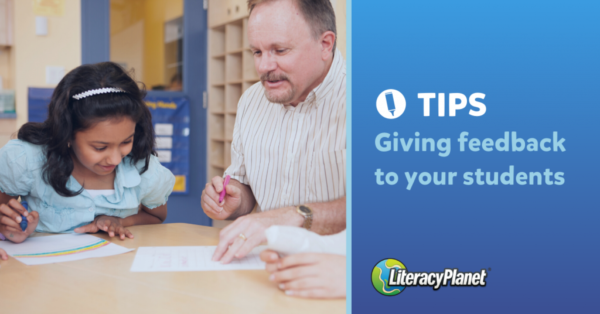
Feedback is essential for student learning, but grading student performance means combining accuracy and empathy while understanding that every student has their own needs. How can you personalise your approach to marking while maintaining consistency across the class?
Here are some tips for providing feedback.
Give students an accurate assessment of their performance
This might seem like a given, but remarkably, many teachers fail to provide adequate, clear-eyed assessments of student performance. There are a number of reasons why this occurs, including:
- The teacher is too focused on strategies to improve
- The teacher does not wish to ‘coddle’ students by telling them they are doing well / praising them
- The teacher doesn’t wish to ‘dishearten’ their students by telling them they aren’t performing to standard
However, evidence suggests that providing feedback on performance is key to helping students improve, achieve and better themselves.
Giving effective feedback to students
When providing feedback to your students, you can draw from these four options:
- Providing affirmation on things they did well
- Correcting issues by directing the student towards the solution
- Walking students through a successful methodology or process
- Showing students how they can critique their own work and better judge personal performance.
Providing affirmation (not praise)
When providing feedback to your students it’s essential that positive feedback affirms what they did well, rather than praises the student. The point of difference between these two options can be defined as:
- Praise heaps the success of the person. “You’re very smart, well done.”
- Affirmation focuses on the quality of the work done. “This is the correct answer. Well done.”
Correcting issues and directing towards solutions
When providing feedback to your students it’s not enough to simply say when something is wrong.
Mistakes are part of the learning experience
It’s essential for students to understand that making mistakes is part of learning. For students to learn, they must be directed to the right answer. Correct, then direct.
As a teacher, how you achieve this will largely be contextual to the activity, subject and student.
Focus on single skills or questions
When feedback is too broad it can be hard for students to distinguish the relevance of the feedback. Try to focus on a particular element of the essay and provide clear, concise recommendations.
Sometimes, particularly with simple questions, the direction will be a correction. For more complex activities, you may want to show your students a particular methodology or process.
Walking students through a methodology or process
For more complex tasks it is better to show a student how to reach an answer rather than just simply correct the answer.
- Show them a step-by-step process
- Give them guidance in how to reference source material
- Provide learning guidance using this feedback model to empower the student.
Essentially you want to connect the student first to:
- What they did, and
- Why it produced that result
And then:
- What they can do, and
- How that leads to an improved result.
While walking students through methodology and process can be time-consuming, it’s essential for providing quality feedback that will impact the student’s capacity to learn and move forward. Educators can address small groups or even the whole class if it is valuable to multiple students, but it’s important to touch base with students on particular processes that might help them learn.
Showing students how to critique their own work
Unlocking a student’s potential to critique their own work requires first that the student be capable of processing taught methodologies.
Coaching students to evaluate their own work means the student must be able to identify where they need to improve and gain insight from that identification.
It’s an important life skill but teachers shouldn’t pressure every student to achieve this level of learning. After all, every student is different and learns at their own pace. However, you can guide them by asking questions like:
- What is the ideal answer to this question?
- What aspects of this answer did you answer correctly?
- Which aspects need work?
For students who are responsive to ‘correct and direct’ feedback, self-critique can be an important step.
Develop strategies for your students to perform better
Feedback is important for any student. It’s also an important tool in building trust between teachers and students. Use the above guide to improve your farming and feedback and you’ll find students improve faster and are more engaged with the learning materials.




